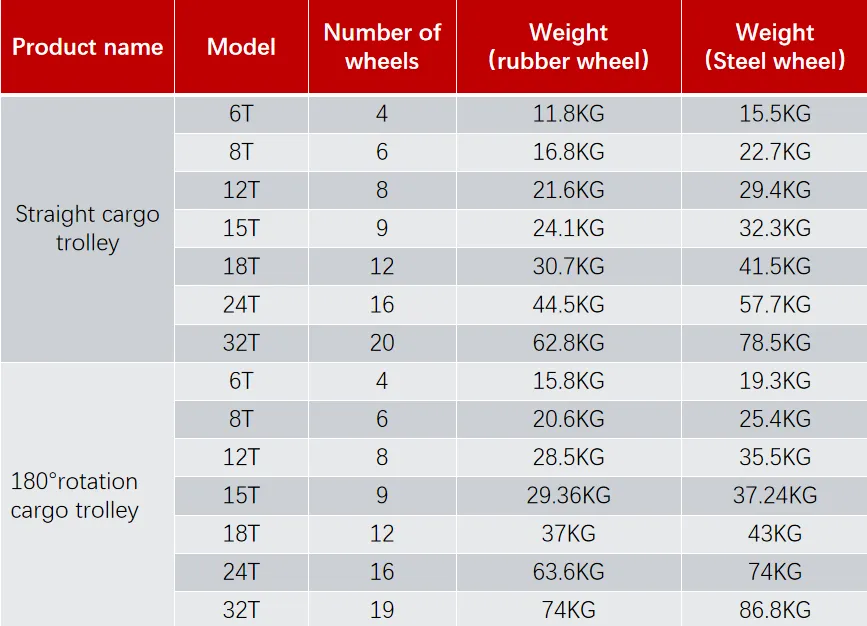Innovative Solutions for Efficient Machinery Transportation and Handling Systems
The Machinery Dolly An Essential Tool in Heavy Lifting
In the world of heavy machinery and construction, the importance of effective handling equipment cannot be underestimated. Among the myriad tools available in this sector, the machinery dolly stands out as a versatile yet often overlooked asset. This article explores the significance of machinery dollies in industrial applications, examining their design, benefits, and practical uses.
A machinery dolly is essentially a low-profile platform fitted with wheels, designed to support and transport heavy machinery or equipment. Depending on its load capacity and specific design, it can move anything from small engines to large industrial generators. What sets machinery dollies apart from other transport devices is their ability to maneuver in tight spaces, allowing operators to relocate equipment with precision and ease.
Design and Functionality
Machinery dollies are typically constructed from robust materials such as steel or heavy-duty plastic, ensuring they can withstand significant weight. They often feature a set of swivel caster wheels that allow for 360-degree movement, providing operators with enhanced control during transportation. Many models come equipped with safety features such as locking mechanisms, which prevent accidental movement while equipment is being loaded or unloaded.
The design of a machinery dolly also incorporates a low-profile frame, making it easier to load heavy items from the ground level
. Some advanced dollies may include hydraulic features that facilitate lifting and lowering equipment, further aiding in the handling process.Benefits of Using Machinery Dollies
machinery dolly

One of the primary advantages of machinery dollies is their ability to reduce the risk of workplace injuries. Manual lifting of heavy equipment can lead to strains and accidents, contributing to downtime and increased costs. By utilizing a machinery dolly, companies can minimize human involvement in transporting heavy items, thereby promoting a safer working environment.
Moreover, machinery dollies enhance productivity. When equipment can be moved quickly and efficiently, tasks can be completed faster, allowing workers to focus on other critical aspects of their jobs. The versatility of machinery dollies also means they can be used in various settings, from manufacturing plants to construction sites, making them indispensable tools in many industries.
Practical Applications
The practical applications of machinery dollies are vast. In the automotive industry, for instance, they are commonly used to move engines and transmissions during assembly or repair processes. In manufacturing settings, dollies facilitate the transportation of heavy molds and dies, streamlining production workflows. Furthermore, in warehouses and distribution centers, dollies enable staff to transport heavy pallets and oversized items without the need for more complex handling systems.
Conclusion
As industries continue to evolve and expand, the need for efficient handling solutions becomes ever more critical. Machinery dollies provide a practical, cost-effective solution that addresses various challenges associated with transporting heavy equipment. Their design, functionality, and safety features make them essential tools in enhancing productivity and ensuring safety in the workplace.
In conclusion, the machinery dolly is much more than a mere transport device; it is a vital component in the machinery management process. By investing in high-quality dollies, companies can improve operational efficiency, reduce injury risks, and ultimately create a more effective working environment. Whether in construction, automotive, or manufacturing, the benefits of machinery dollies are clear, solidifying their place as an indispensable tool in the toolkit of heavy-duty operations.
-
Unlock Seamless Relocation with Our Heavy Equipment Moving ExpertiseNewsJun.06,2025
-
Unleash Unrivaled Flexibility with Our Adjustable Gantry CraneNewsJun.06,2025
-
Unleash Heavy-Duty Efficiency with Our Industrial Gantry Crane SolutionsNewsJun.06,2025
-
Revolutionize Steel Handling with Our Magnetic Lifter RangeNewsJun.06,2025
-
Master Equipment Mobility with Premium Machinery Mover SolutionsNewsJun.06,2025
-
Elevate Your Material Handling with Magnetic Lifter TechnologyNewsJun.06,2025
-
YS Permanent Lifting Magnets: The Smarter Way to Handle SteelNewsMay.22,2025
